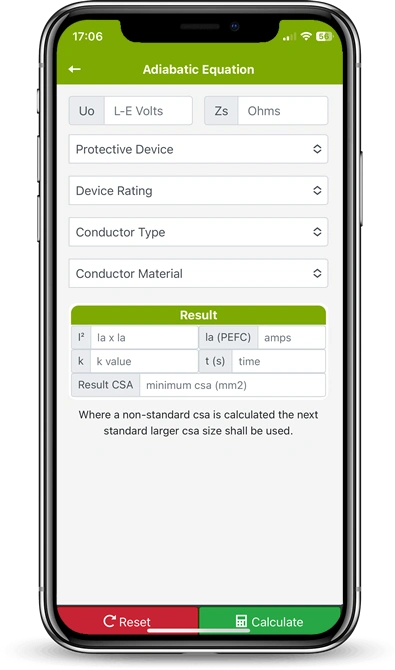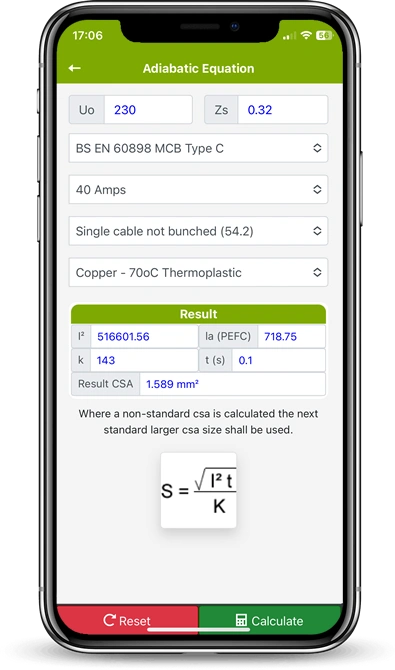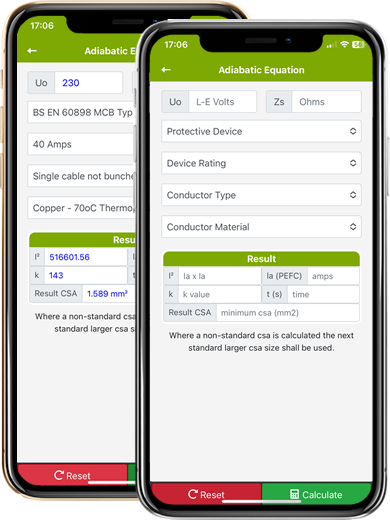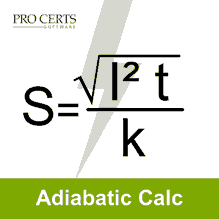
How to use the Adiabatic Calculator
Using this Adiabatic Equation Calculator couldn’t be any easier, just enter the voltage and Zs/Ze values, then select an option from the down down options.
- Enter the voltage to earth (Uo) value.
- Enter the circuit Zs or Ze value.
- Select a protective device.
- Select a device rating.
- Select a conductor type
- Select a conductor material.
- Tap calculate.
BS 7671 states, the cross-sectional area of each protective conductor, other than a protective bonding conductor, shall be:
- Calculated in accordance with regulation 543.1.3 or
- Selected in accordance with regulation 543.1.4
This Adiabatic Equation Calculator is designed to assist in satisfying option i. above.
Adiabatic Calculations
This calculator will calculate the following parameters,
If a non-standard csa is calculated the next standard larger size shall be used.
The demo video may not reflect the current version of the app.


Upgrade to the pro version
Upgrade to our Electrical Tools and Reference app which includes many more calculators, tools and electrical tables used by many professional electricians on a daily basis.






